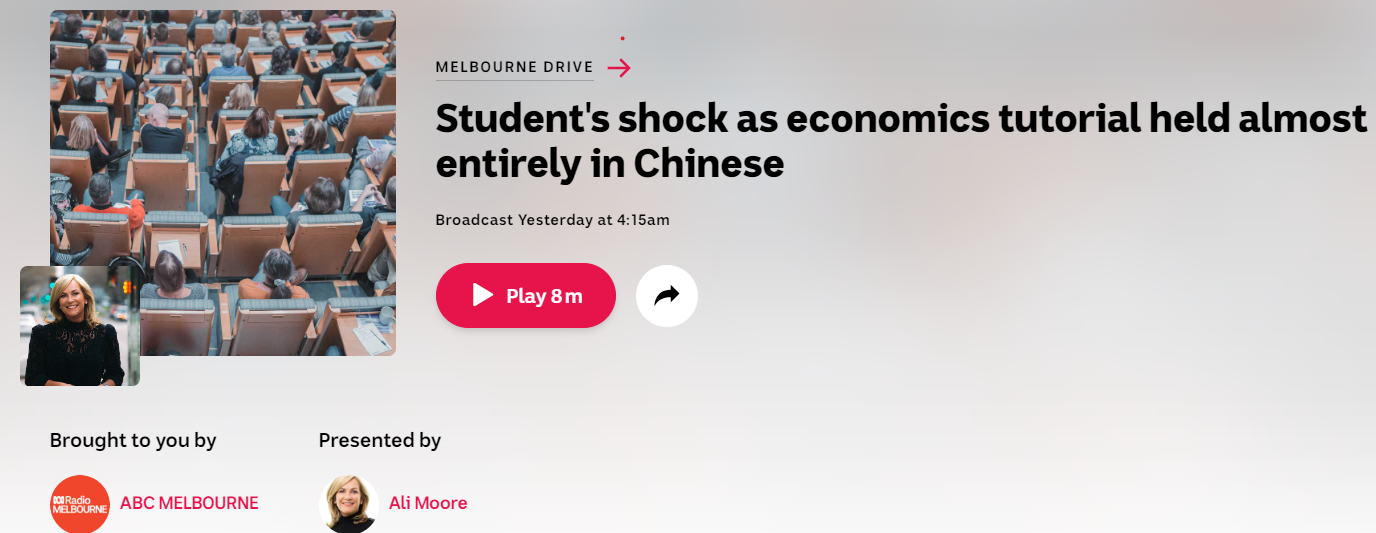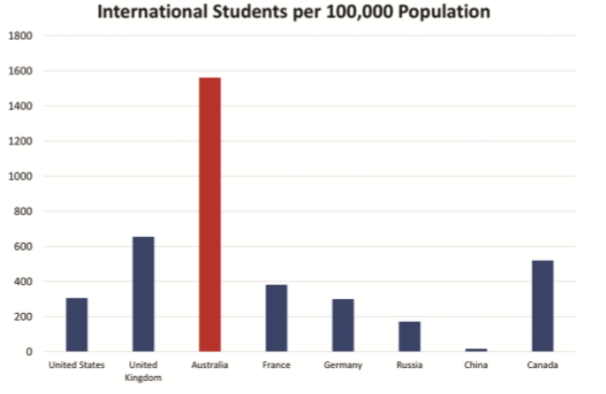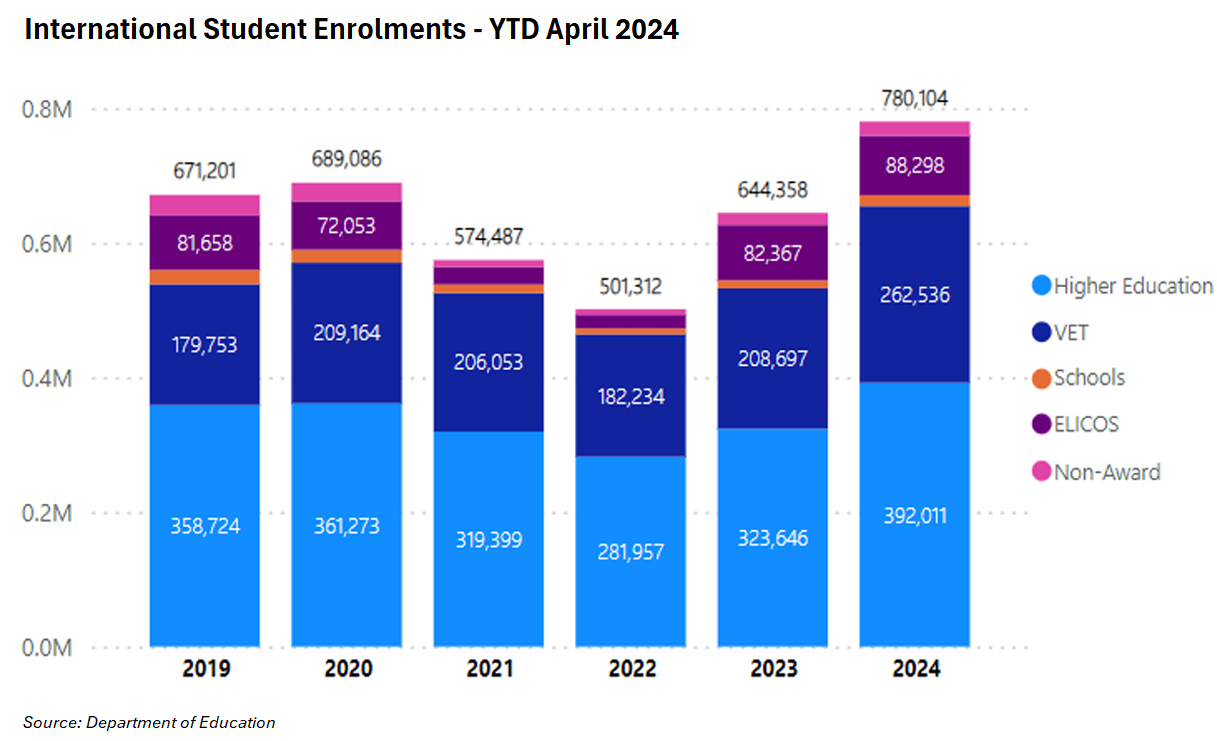According to leaked details obtained by The AFR, the Albanese government plans to limit universities to enrolling no more than 40% of international students.
The limits will remain in force for two years, beginning in January 2025, with baseline numbers chosen from 2019 levels.
Around ten universities have enrolments of 40% or greater, including the University of Sydney, the University of Melbourne, Monash, and the University of Queensland.
The University of Sydney, the country’s top enroller of international students, would need to cut 12,150 places, while the University of Melbourne would lose 7725 places.
Universities are outraged by the timing and scale of the measures, arguing that they will impede financial viability and jeopardise thousands of jobs.
“This last-minute decision will not only have shocking economic consequences in a cost-of-living crisis, at a university level it makes managing budgets impossible for 2025 and withdrawing offers to students we have long courted burns them in a cavalier and lasting way”, said Vicki Thomson, chief of the Group of Eight.
“The very spectre of this legislation is already trashing Australia’s international reputation, it will trash our universities and trash our economy. It beggars belief”, she said.
The open-borders Greens senator Mehreen Faruqi labelled the proposed caps “a migration policy disguised as an education policy” and claimed “Labor is crushing universities in a bid to look tough on borders”.
However, University of Queensland chancellor Peter Varghese said last month that the 40% cap was necessary “to prevent our universities drifting towards becoming global businesses rather than public institutions primarily dedicated to the education of Australian students”.
“Without such a cap, the allure of international student fees becomes irresistible and will inevitably go well beyond 50%”, he said.
The Home Affairs department said there had been a growth in “non-genuine students and unscrupulous providers” using the sector as a back door to enter Australia.
Hilariously, at the same time as the higher education lobby and the fake Greens are crying foul, we received the below report from the ABC revealing how economics tutorials at the University of Melbourne are being held in Mandarin:

Imagine doing an economics degree and attending weekly economics tutorials at the University of Melbourne… and those compulsory tutorials ended up being conducted in Mandarin.
That is the story of Harry, a first year economics student at Melbourne University, began attending his mandatory tutorials, he was excited to engage with his fellow student and start his further education journey.
But Harry found himself unable to participate in his class after students and the tutor would converse in Mandarin for almost the entire session.
He told Ali Moore that he “felt left out of the learning conversation”.
“I am the only Caucasian in one of my tutorials. In most of them, I am the sole Caucasian in the class. This leads to a lot of disconnect in the language”.
“When these students ask a question, they do so in Mandarin. And when the teacher responds, they do so in Mandarin. Then, afterwards, they wouldn’t explain in English what had been said. So, I was left in the dark”.
Imagine being a local Australian kid, working hard at school to get into Melbourne University, and then finding that you are the only Caucasian and that the classes are being conducted in another language.
Is this the type of university system that we want?
Let’s get real here. Australia had easily the highest share of international students in the world prior to the pandemic:

Source: Salvatore Babones (2019)
The numbers since have ballooned higher, as illustrated in the following chart:

The situation has become so farcical that universities have been caught handing out degrees like tic-tacs to students without functioning English and whom do not understand the course work.

A 40% cap on international student enrolments remains far too high and would see the system continue as is. Again, is that really what we want?
Salvatore Babones recommended in his latest book that international student numbers be capped at 20% per course, 15% per university, and 10% from any one country:
“The Commonwealth should place pedagogically-appropriate limits on the number of international students Australian public universities are allowed to enroll”.
“The exact proportions might be determined by an expert committee, but best practice comparisons suggest something along the lines of a maximum 20% international students in any particular degree course, 15% for each university overall, and 10% from any one country”.
“Private universities might be allowed to offer courses primarily for the purpose of serving international students, but universities that receive public funds should not be competing in this space”.
“To the extent that international students enrich the educational environment for domestic students, they should be welcomed. But it should be a condition of Commonwealth funding that publicly-supported universities operate primarily in the public interest”.
Australia’s universities should exist to serve the needs of Australians, not international students. We should never have situations where classes are being conducted in another language and Australian students have a minority presence.
The learning experience of local students must take precedence. Otherwise, what is the purpose of Australian universities?

